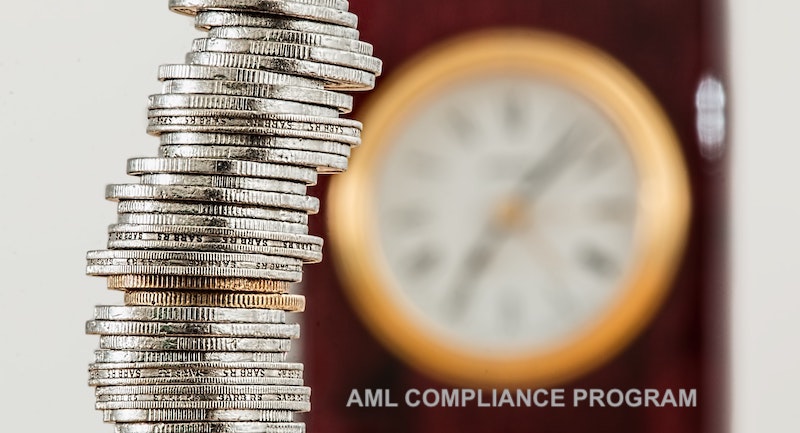
Organizations are required to comply with a wide variety of regulations, each of which has its own set of requirements. The purpose of the anti-money laundering (AML) compliance rules is to put a halt to fraudulent operations and criminal enterprises, such as funding for terrorism.
Whether or not a business has to comply with AML regulations is sector-specific. The business must, however, adhere to anti-money laundering regulations if it conducts financial transactions.
Whether you're beginning from scratch or trying to fine-tune your existing AML compliance program, having a thorough checklist and a clear set of standards is important.
What Is an AML Compliance Program?
What constitutes AML compliance for a company is how it operates in order to avoid breaking the law. Employee training, account monitoring, reporting, and other internal controls are only some of the many compliance standards that make up a standard AML regulation checklist.
AML compliance procedures are designed to detect, respond to, and eradicate money laundering and financial fraud concerns. Effective compliance programs help businesses learn about money laundering concerns, educate employees on the legal consequences of noncompliance, and put a stop to any potentially illegal actions that may be taking place inside the company.
By allowing organizations to detect, investigate, and report suspicious behavior in real-time, a reliable AML compliance platform can make it simpler to comply with AML rules. It's a completely automated solution meant to help organizations adhere to ever-changing AML requirements.
Which Factors Influence AML Compliance?
Every business must evaluate the risks and regulatory requirements it may face before developing a compliance program, including:
- Examining the potential threats presented by money laundering to the business.
- Conducting research on domestic and international laws and ordinances in order to stay out of legal trouble.
- Taking into account any possible signs of misconduct at work.
Given the volatility of legislation, it's not surprising that a number of external variables might have an impact on an organization's anti-money-laundering efforts. Not to mention the growing use of mobile banking and digital currencies, which resulted in additional compliance standards.
Organizations need to take a few crucial measures in order to have an effective AML compliance program. Let's dig further into these.
1. Train and Educate Your Staff
Over time, expectations for complying with AML requirements will shift. This is why it's important for your employees to have a firm grasp of anti-money laundering processes. In order to do this, businesses must have particular monitoring procedures and education plans. This guarantees that the organization has the proper personnel with the necessary skills to fulfill its AML responsibilities.
2. Establish Measures to Ensure Compliance Internally
The next step is to establish internal controls and procedures to guarantee continued compliance with all applicable regulations. Financial institutions have a responsibility to do customer due diligence (CDD), monitor for suspicious behavior, and submit relevant data to regulatory bodies like the Financial Crimes Enforcement Network (FinCEN). The scale of an organization and the dangers it faces might each warrant a unique set of procedures.
3. Conduct Independent Testing
While it is important to educate staff and implement internal controls, AML compliance also requires periodic independent testing. An authorized third-party firm must do this testing annually in order to comprehend and evaluate your company's program. Independent audits evaluate whether all AML measures are in place and operating properly instead of assigning someone to be directly accountable for regulatory compliance in the organization.
4. Carry Out a Thorough Risk Analysis
May 2018 saw the unveiling of the final Customer Due Diligence (CDD) regulation from FinCEN. The instantaneous impact of this change made it a vital part of anti-money laundering regulations.
According to the CDD regulation, businesses should assess their vulnerability to money laundering and terrorism funding by doing the following:
- Customer profiling
- Checking their credentials
- Tracking financial activity in real-time
- Identifying and reporting suspicious behavior
Organizations must take the appropriate action when red flags are raised, such as when a client submits a fraudulent document, makes abnormally large transactions, or attempts to create a bank account with inadequate client information.
For instance, before approving a client's account and giving them access to private information, it is wise to do further checks to see if they are attempting to do so from a high-risk nation or a blacklisted IP address.

Final Thoughts
After implementing a successful anti-money laundering program, the next step is to figure out how to keep your business in compliance. It's the responsibility of businesses to ensure that their compliance program remains current as requirements evolve. Businesses can suffer serious repercussions if AML compliance is not maintained.
In 2022 alone, banks and other financial institutions were fined almost $5 billion for AML infractions, which led to a worldwide rise of 50% from the year before. Staying AML-compliant can save your business from substantial monetary and reputational damage.
Share this post
Leave a comment
All comments are moderated. Spammy and bot submitted comments are deleted. Please submit the comments that are helpful to others, and we'll approve your comments. A comment that includes outbound link will only be approved if the content is relevant to the topic, and has some value to our readers.

Comments (0)
No comment